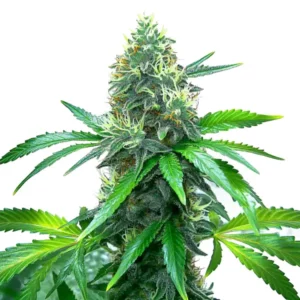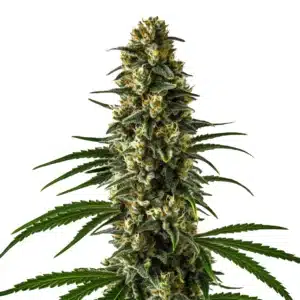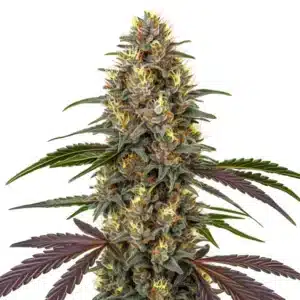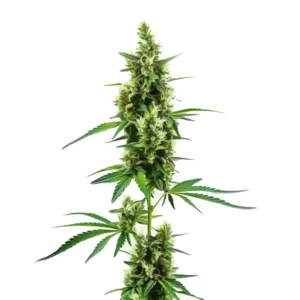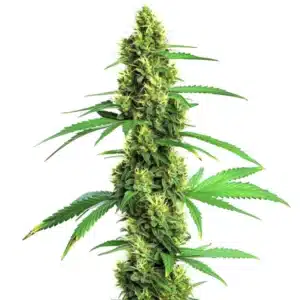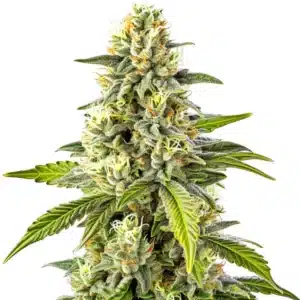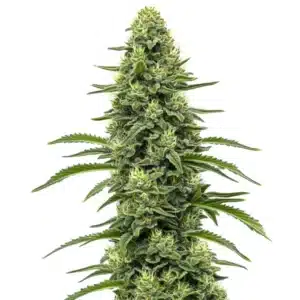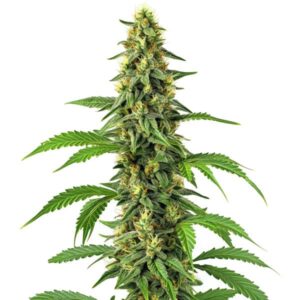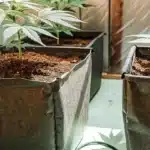
How to Improve Nitrogen Uptake in Cannabis
Nitrogen is key for cannabis growth. It helps plants develop lush, green leaves and supports healthy growth. But how can you make sure your cannabis plants are getting enough? Growers often ask how to improve nitrogen uptake in cannabis, and the answer lies in practical methods such as adjusting soil pH, using organic matter, and ensuring proper watering schedules. These strategies boost nutrient absorption and keep plants thriving.
Giving your cannabis the right nutrients is crucial. Start with soil rich in organic matter. This provides a continuous release of nitrogen. If you notice yellowing leaves, it could be a sign of nitrogen deficiency. Adjust your nutrient mix accordingly.
Recommended Strains
OG Kush
|
|
THC | 20% - 24% (Medium) |
|
|
Type | Feminized |
|
|
Yield | Medium |
|
|
Phenotype | 55% Indica / 45% Sativa |
Girl Scout Cookies
|
|
THC | 18% - 25% (Medium) |
|
|
Type | Feminized |
|
|
Yield | High |
|
|
Phenotype | 60% Indica / 40% Sativa |
Consider using compost or well-rotted manure. These natural methods enhance nitrogen uptake in cannabis. They not only supply nitrogen but also improve soil structure, which aids in nutrient absorption. Keeping your plants happy and healthy is the goal.
Choosing the Best Fertilizers for Cannabis Nitrogen Absorption
When looking for fertilizers, opt for those high in nitrogen. Organic fertilizers like blood meal or fish emulsion are excellent choices. They release nitrogen slowly, ensuring your plants have a constant supply. Chemical fertilizers work too, but use them carefully.
Another option is to try liquid fertilizers. These are quickly absorbed by plants, making them effective for rapid nitrogen delivery. Remember to follow the package instructions to avoid over-fertilizing, which can harm your plants.
Granular fertilizers are also a great option for how to improve nitrogen uptake in cannabis, as they can be mixed into the soil for a slow-release effect. This method is particularly useful in outdoor grows where consistent nutrient supply is necessary. Furthermore, time-release fertilizers are available, providing a steady feed of nitrogen over several weeks.
It’s important to match your fertilizer choice to your specific growing conditions. For example, in hydroponic systems, water-soluble fertilizers are ideal as they ensure nutrients are readily available. Experimenting with different types and monitoring plant response can help you find the best fertilizers for cannabis nitrogen absorption.
Top Cannabis Strains for Nitrogen Efficiency
Different strains of cannabis may have varying nutrient needs. For instance, the Blue Dream strain is known for its resilience and general ease of growing, making it a good candidate for testing nutrient adjustments.
Girl Scout Cookies is another excellent strain. It thrives with a balanced nutrient regimen, which can help you observe changes in nitrogen uptake efficiency.
When selecting strains, consider those known for their vigorous growth and adaptability to nutrient-rich environments. Strains like Blue Dream and OG Kush are excellent examples, as they can handle high nitrogen levels without encountering toxicity issues. This allows for more flexibility in your cannabis nutrient management for better nitrogen absorption.
It’s crucial to understand the genetic requirements of each strain. Some may require more attention to nutrient balance, while others are more forgiving. Conducting research and possibly consulting with experienced growers can provide insights into the best strains for optimizing nutrient absorption. Knowing how to improve nitrogen uptake in cannabis is especially important, as nitrogen plays a key role in vigorous growth, healthy foliage, and maximizing overall yields.
Promos & Deals
Natural Methods to Enhance Nitrogen Uptake in Cannabis
Companion planting is a great natural method. Plants like clover can fix atmospheric nitrogen, enhancing soil nitrogen levels around your cannabis. This improved soil condition makes it easier for your cannabis plants to absorb nitrogen.
Another method is mulching. Organic mulches decompose over time, providing a slow-release nitrogen source. This not only supplies nutrients but also helps retain soil moisture, creating a better environment for nutrient uptake.
Cover crops are another natural method to enhance nitrogen uptake in cannabis. These plants, such as legumes, fix nitrogen in the soil, improving its overall fertility. Incorporating them into your garden plan can lead to more efficient nutrient cycling and healthier cannabis plants. For growers wondering how to improve nitrogen uptake in cannabis, using cover crops is one of the most effective and sustainable strategies.
Besides to mulching and cover crops, using biochar is an innovative way to improve soil conditions. Biochar increases soil aeration and water retention, aiding in nutrient uptake. This, combined with other natural methods to enhance nitrogen uptake in cannabis, supports a sustainable and productive growing environment.
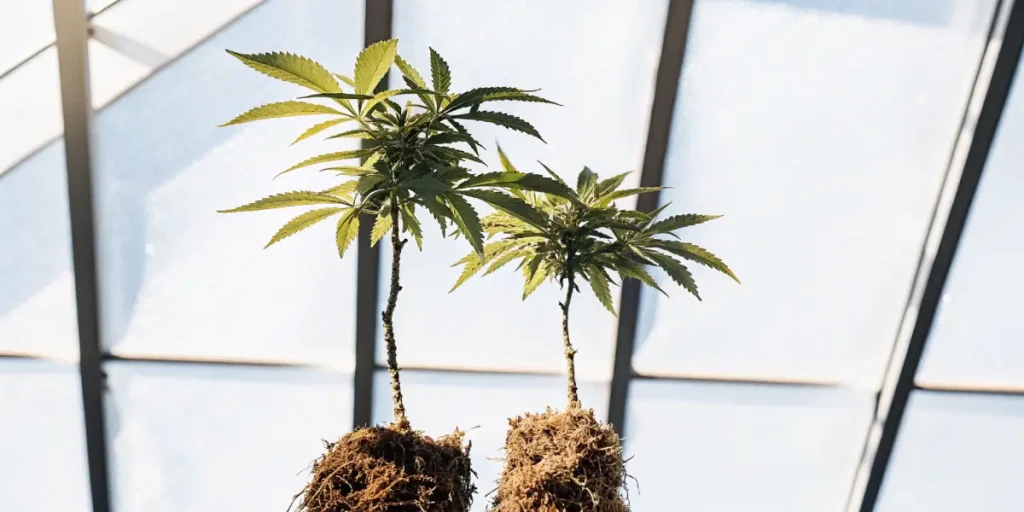
Improving Nitrogen Efficiency in Cannabis Plants
Adjusting the pH level of your soil can significantly impact nitrogen efficiency. Cannabis prefers a slightly acidic to neutral pH. This range allows for optimal nutrient absorption, including nitrogen.
Regular soil testing is a helpful practice. It provides insights into nutrient levels and pH balance. With this information, you can make informed decisions on nutrient management for better nitrogen absorption.
Another important factor in improving nitrogen efficiency in cannabis plants is ensuring adequate soil aeration. Compacted soil can limit root growth and reduce nutrient uptake, including nitrogen. Implementing practices like regular tilling or using aeration tools can enhance soil structure and nutrient accessibility.
Moreover, utilizing mycorrhizal fungi can greatly benefit nitrogen uptake. These beneficial fungi form symbiotic relationships with cannabis roots, increasing the root’s surface area and improving nutrient absorption. Incorporating these fungi into your growing medium can be a game-changer for optimizing nitrogen uptake during cannabis growth.
Optimizing Nitrogen Uptake During Cannabis Growth
During the vegetative stage, cannabis plants require more nitrogen. This is the time to focus on optimizing nitrogen uptake. Keep an eye on plant health. Green, vibrant leaves are a good sign, while yellowing may indicate a need for more nitrogen.
Consider foliar feeding as a direct way to supply nitrogen. This involves spraying a nutrient solution directly onto the leaves. It’s a quick method to address deficiencies, providing immediate results.
To further optimize nitrogen uptake during cannabis growth, ensure that your plants receive adequate light. Light plays a vital role in photosynthesis and nutrient processing, including nitrogen absorption. Adjusting light intensity and duration can support healthy growth and maximize nutrient utilization.
Additionally, regular pruning can help manage nitrogen distribution within the plant. Removing unnecessary foliage allows more nutrients to be directed towards essential parts, promoting robust growth. This technique is particularly effective in ensuring efficient nitrogen use throughout the plant’s lifecycle.
Cannabis Nutrient Management for Better Nitrogen Absorption
Maintaining a balanced nutrient schedule is vital. Start with nitrogen-rich feedings and gradually adjust as your plants transition to the flowering stage. This ensures they receive the nutrients they need at each growth phase.
Observe your plants closely. Each strain may respond differently to nutrient changes, so be prepared to tweak your approach. The goal is to keep your plants thriving throughout their lifecycle.
Effective cannabis nutrient management for better nitrogen absorption involves not only feeding but also monitoring environmental conditions. Factors such as temperature and humidity can impact nutrient uptake, including nitrogen. Maintaining optimal growing conditions supports healthy plant development and efficient nutrient use.
It’s also beneficial to incorporate regular flushing into your nutrient management strategy. Flushing removes excess salts and nutrient buildup, improving nutrient absorption efficiency. This practice is particularly important before the flowering stage to ensure clean and healthy buds.
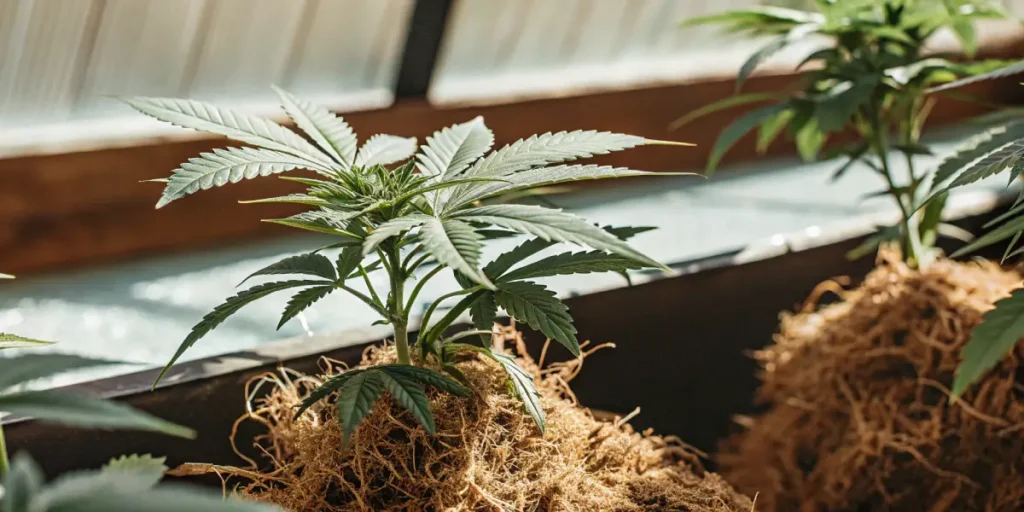
FAQ
How do I know if my cannabis plants have a nitrogen deficiency?
Yellowing leaves are often the first sign of nitrogen deficiency in cannabis plants, starting from the bottom and working upwards. This happens because nitrogen is a mobile nutrient, and the plant moves it to new growth when there’s a shortage.
If you notice slow growth or small, pale leaves, it might be time to adjust your feeding regimen. Regularly checking your plants and soil can help catch deficiencies early, ensuring your cannabis remains healthy and vigorous.
Besides to visual symptoms, conducting regular soil tests can help detect nitrogen deficiencies. These tests provide detailed information on nutrient levels, allowing for precise adjustments in your feeding schedule. This proactive approach is key to understanding how to improve nitrogen uptake in cannabis effectively.
Moreover, using a nutrient monitoring system can provide real-time insights into plant health and nutrient needs. Such systems can alert you to potential deficiencies, enabling timely interventions to maintain optimal nitrogen levels in your grow.
What are the risks of over-fertilizing with nitrogen?
Over-fertilizing can lead to nitrogen toxicity. Symptoms include dark green leaves, burned leaf tips, and weak stems. Plants may look lush, but they won’t produce quality buds, as energy is diverted to leaf production.
To avoid this, follow fertilizer instructions carefully and adjust based on your plant’s response. It’s easier to add more nutrients than to deal with toxicity, so start slow and monitor progress.
Another risk of over-fertilizing is the potential for nutrient lockout, where excess nutrients prevent the absorption of other essential elements. This can lead to a range of deficiencies, impacting overall plant health. Implementing a balanced nutrient schedule and regular flushing can help prevent these issues.
Additionally, over-fertilization can harm the soil ecosystem, affecting beneficial microbes that aid in nutrient cycling. By practicing careful nutrient management, you can maintain a healthy growing environment and ensure sustainable cannabis cultivation.
Can I use household items to improve nitrogen uptake?
Yes, certain household items can help. Coffee grounds are a popular choice, as they add organic material and nitrogen to the soil. Just mix them into your compost or soil lightly.
Eggshells, when crushed, can also improve soil structure and provide minor nutrients. These methods are cost-effective and environmentally friendly, aiding in natural methods to enhance nitrogen uptake in cannabis.
Banana peels are another household item that can be beneficial. They decompose to release nitrogen and other nutrients. Simply chop them finely and mix them into your compost or directly into the soil to enhance nutrient availability.
Furthermore, the use of aquarium water is an innovative way to recycle nutrients. This water is rich in nitrogen and other elements from fish waste, providing a natural fertilizer for your cannabis plants.
How does pH affect nitrogen uptake in cannabis?
The pH level of your soil or growing medium influences nutrient availability. Cannabis plants prefer a pH range of 6.0 to 7.0 in soil. Outside this range, nitrogen and other nutrients become less available, leading to deficiencies.
Regular pH testing and adjustments help maintain the optimal range for nutrient uptake. This ensures your plants can absorb nitrogen efficiently, supporting healthy growth and development.
Using pH-adjusting products can help maintain the ideal range. These products are available in liquid or granular form and are specifically designed for cannabis cultivation. Consistent monitoring ensures that your plants have the best environment for nutrient absorption.
Additionally, understanding the pH preferences of different strains can optimize nutrient uptake. Some strains may thrive in slightly lower or higher pH levels, so tailoring your approach based on strain needs can enhance nitrogen uptake efficiency.
Are there specific strains better suited for high nitrogen environments?
Yes, some strains like Blue Dream and OG Kush are known for their robust growth and ability to thrive in nutrient-rich conditions. They can handle higher nitrogen levels without adverse effects.
Choosing the right strain can make nutrient management easier. Consider your growing environment and the strain’s nutrient tolerance when planning your grow, ensuring a successful cultivation experience.
Researching strain-specific nutrient requirements can provide valuable insights into optimizing nitrogen uptake during cannabis growth. Some strains may display unique nutrient demands that, when met, can significantly enhance growth and yield.
Moreover, engaging with online grower communities can offer firsthand experiences and recommendations on strains that perform well in high nitrogen conditions. Sharing knowledge and learning from others can greatly improve your cultivation practices.


